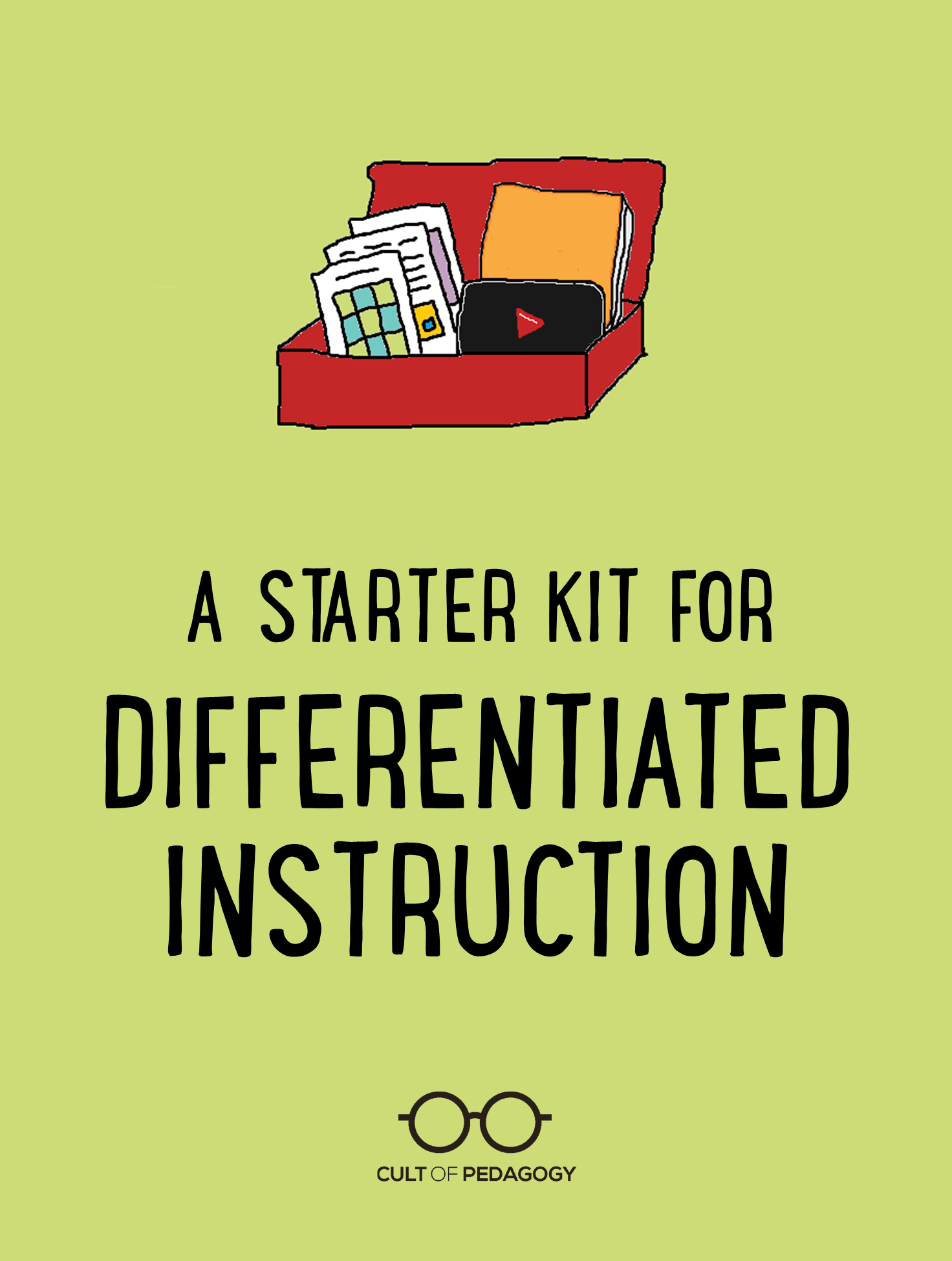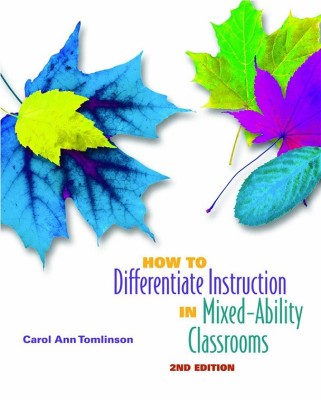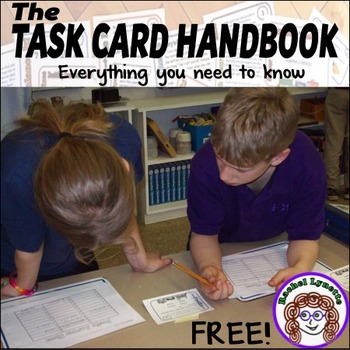A Starter Kit for Differentiated Instruction

This post contains Amazon Affiliate links; if you purchase from Amazon after going through these links, Cult of Pedagogy receives a small commission at no extra cost to you.
You have probably come to this article for one of two reasons: Either you want to start differentiating instruction in your classroom and don’t know where to start, or you already differentiate, but want to see if you’re missing anything. I have combed through tons of online resources on how to differentiate instruction, and have put together this collection of the clearest, most high-quality resources for learning how to differentiate in your classroom. Off we go, then!
Step 1: Learn the Basics

Lots of teachers think they are differentiating, when they really kind of aren’t. So before you get started, give yourself a solid overview of what differentiation is (and isn’t) and how it works. To do that, you need to read Carol Tomlinson, whose work is the gold standard in differentiation. Her book, How to Differentiate Instruction in Mixed-Ability Classrooms, is the best one I’ve seen on the subject. And it’s short: At just over 100 pages, it’s a fast, easy read, and is full of useful information that will set you on the path toward high-quality differentiation.
In addition to explaining basic principles, the book shows you how to manage a differentiated classroom, teaches you specific strategies, and lets you peek inside a few sample differentiated classrooms so you can see how all the parts work together. I really can’t recommend this book highly enough…get it!
Step 2: Watch Real Teachers Differentiate
Reading about how to differentiate on paper is helpful, but seeing other teachers actually doing it will give you a far better understanding of how to implement the strategies in your own classroom.
This Edutopia video shows how one school has set up a system they call Reteach and Enrich, where time is built into the schedule every day to reteach students who haven’t met learning targets or provide enrichment activities for those who have. Watching this process in action makes it really clear HOW to make it work:
In the video below, Hampton High School teachers demonstrate using exit tickets to check for understanding and to tier instruction for the following day.
Below, second grade teacher Robert Pronovost shows how he uses two separate online programs, Planet Turtle and Dreambox, to meet students’ individual needs in 2nd grade math:
The next video shows how veteran teachers Larry Ferlazzo and Katie Hull Synieski differentiate instruction for English-language learners. These strategies can make lessons accessible to every student regardless of language proficiency.
Finally, this video shows how Mary Vagenas uses Learning Menus to differentiate in her 7th grade Social Studies class:
Step 3: Gather Differentiation Tools
Once you understand the basic principles of differentiation, it’s a good idea to have a few basic tools on hand.
Task Cards
What are task cards? They are all the rage in some classrooms: The basic idea is that you take tasks and questions that might normally appear on worksheets and put them onto laminated cards (one item per card), which allows you to better individualize instruction, set up centers, and group students according to need (plus, you can re-use them year after year!). You can make your own or browse through thousands on Teachers Pay Teachers. This free e-book by Rachel Lynette explains how to use them in detail:

Tiered Lesson Template
This blog post from Marsha McGuire at A Differentiated Kindergarten shows you how to plan a tiered lesson and includes an editable template. Even though the featured classroom is a kindergarten, Marsha’s system would work effectively with all age groups.
Using Color to Help You Tier Differentiated Activities
Learning Menus
This packet from the University of Virginia Curry School of Education teaches you how to create learning menus or choice menus, which offer students a variety of learning activities to choose from, depending on their interests and learning profiles.
Choice Menus (PDF)
Further Reading
There’s No Time to Differentiate: Myth-Busting DI, Part 2
by John McCarthy
This Edutopia article discusses some of the myths about and objections to differentiation.
Dr. Kathie Nunley’s Layered Curriculum
This website is based entirely on the Layered Curriculum philosophy. Somewhere between a learning menu and a tiered unit, a layered curriculum looks like an interesting take on differentiation and is worth a look once you’ve got the basics down.
Leading and Managing a Differentiated Classroom
by Carol Tomlinson and Marcia Imbeau
Although I have not read this one, I got a recommendation from Dr. Jennifer Beasley, an assistant professor in the Department of Curriculum and Instruction at the University of Arkansas. “This is a practical guide for how to begin to establish routines and practices that facilitate differentiation. We all know that we could have the most beautiful lesson on paper and see that same lesson fall apart in the classroom as a result of forgetting to give directions for handing out materials. This resource offers many practical examples for putting some routines in place to allow for working in groups, answering questions, or even talking with your students about differentiation.”
Join my mailing list and never miss another post. You’ll get weekly tips, tools, and inspiration — in quick, bite-sized packages — all geared toward making your teaching more effective and joyful. To thank you, I’ll send you a free copy of my new e-booklet, 20 Ways to Cut Your Grading Time in Half. I look forward to getting to know you better!